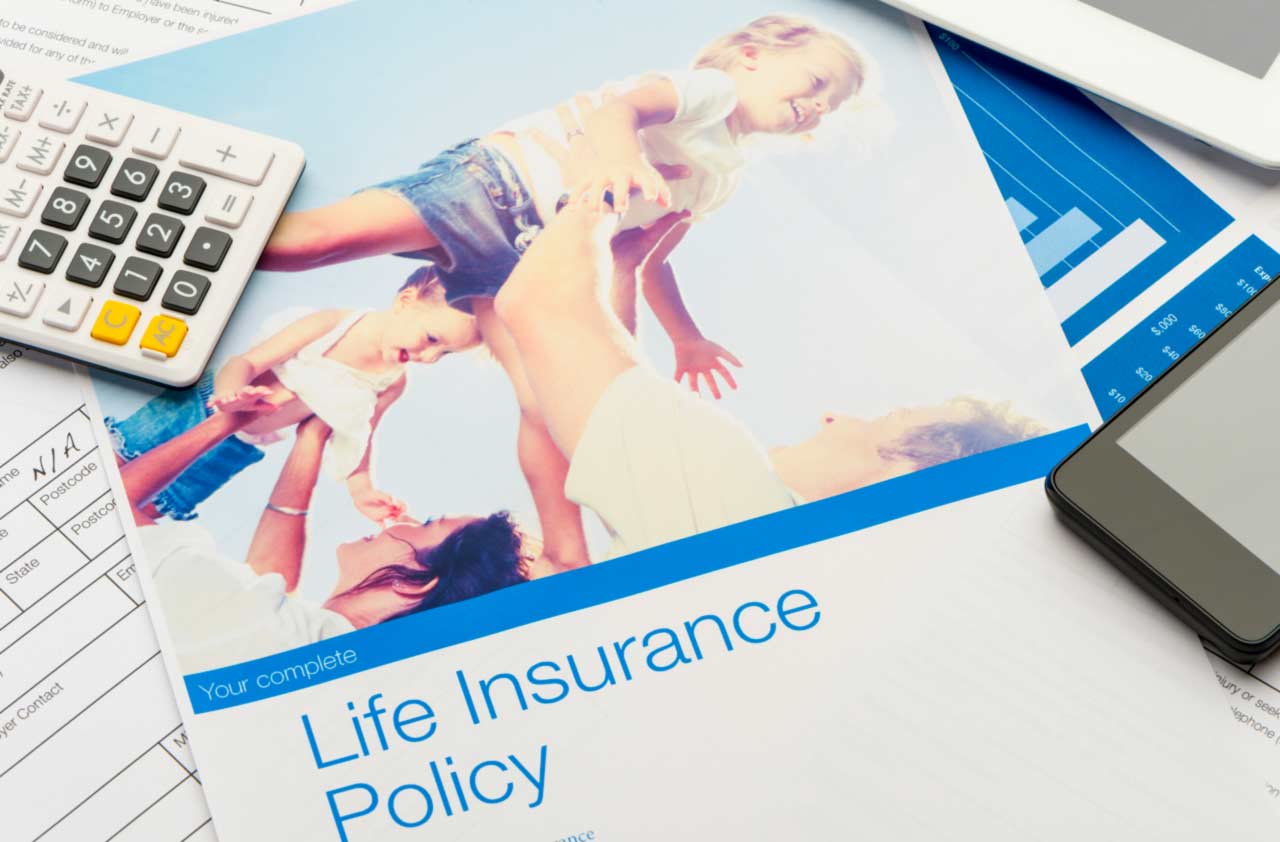Does Life Insurance Deserve a Place in Your Retirement Portfolio?
For many people, it could be worth looking into. But make sure you understand the pros and cons, what you’re paying and what you’re getting for that money.


Most people don’t like to talk about life insurance.
They might acknowledge that it’s a necessity — especially when their kids are still young. But few look beyond the traditional payout of death benefits. They don’t necessarily think of life insurance as an asset for their own future; it’s more about helping to provide financial protection for their loved ones when they’re gone.
But life insurance products have evolved over the years, and the benefits and protections go much further than many know. The right policy could play an important part in your overall retirement plan, so it’s worth doing a little research.

Sign up for Kiplinger’s Free E-Newsletters
Profit and prosper with the best of expert advice on investing, taxes, retirement, personal finance and more - straight to your e-mail.
Profit and prosper with the best of expert advice - straight to your e-mail.
The different types of policies
Policies are usually categorized as either term or permanent insurance. Term is just what you’d think: It’s a set amount of insurance for a set term.
Permanent insurance is a little more complicated. It comes in all shapes and sizes. Here are some of the basics:
- Whole life is the most common type of permanent insurance, according to the Insurance Information Institute. It offers lifelong protection — as long as your premiums are paid — as well as a savings component in the form of cash value accumulation. In addition, there may also be a dividend the company could pay out based on its performance from year to year. A downside is that these policies can have high premiums — and the dividend payment isn’t guaranteed. Premiums vary widely, depending on your age, health and the amount of coverage you want.
- Universal life also combines lifelong protection with a savings component. Both the death benefit and premiums can be flexible, subject to certain minimums and maximums. Premiums first go to pay the death benefit and policy expenses. Any remaining premium goes into the cash value, where it is credited with a rate of interest determined by the insurer, but guaranteed not to be less than a certain amount.
- Variable universal life is structured similar to universal life, except it’s typically tied to a set of investments — which the policyholder generally gets to choose. The cash value of a variable life policy is not guaranteed. If your contract’s investments do not perform well, your cash value and death benefit may decrease, and the policy could eventually lapse.
- Indexed universal life is also structured similar to universal life, but interest credits are linked to a market index (for example, the S&P 500). There’s usually a cap on how much interest is credited to the policy’s cash value, but if the market goes down, your principle is protected by a guaranteed minimum interest rate or floor.
Life insurance pros
Some of these insurance policies also offer riders, typically at an additional cost, that enable you to receive accelerated death benefits if you have a terminal or chronic illness or face expensive long-term care costs. Note that any benefits paid out will be subject to eligibility requirements and will reduce the policy’s death benefit. This can be a powerful option, designed to help meet the needs of retirees, who are living longer than past generations.
Consumers are a little more familiar with the cash value benefits of permanent life insurance policies. The IRS tax code has allowed for life insurance cash values and death benefit proceeds to receive tax advantages that are unique. Death benefits generally are income tax-free, and the money inside the policy grows income tax-deferred, and is tax-free when you take it out in the form of a policy loan.
In addition, there are no contribution limits (other than the guidelines set by the issuing insurance company), you don’t have to leave the money in for a certain amount of time before accessing it, and there’s no IRS tax penalty for taking it before you turn 59½.
Things to watch out for
Those are positives, but there definitely are some things to look out for when you’re choosing your life insurance policy. So make sure you ask about:
- Costs and fees: Before buying a life insurance policy, be sure you understand the policy charges and fees. Insurance companies will deduct some industry-standard fees, and other costs can vary. Be sure the money you’re putting in isn’t being swallowed up by these fees.
- Loan rates: When considering taking a policy loan from your life insurance contract, it’s important to understand the terms and conditions. Most policy loans include interest rate charges. Although you are not required to pay back the loan, it’s important to keep in mind that accessing the cash value through policy loans will reduce available cash values and death benefits and may cause the policy to lapse. In the event of a lapse, outstanding policy loans in excess of the unrecovered cost basis will be subject to ordinary income tax.
- Cap rate: If you choose an indexed universal life contract, I recommend shopping for the highest cap you can get. It’s potentially more money in your pocket if the index performs favorably.
- Stability: Make sure the insurance company you choose is financially stable, as the guarantees and protections provided by life insurance products are backed by the financial strength and claims-paying ability of the issuing insurance carrier. You can search www.ambest.com to see how various companies are rated, or contact your state insurance department.
- Reliability: It is important to appropriately fund your policy so it doesn’t lapse. Some policies offer a no-lapse guarantee rider — this feature may come at an additional cost.
Every type of life insurance has its own pros and cons. Don’t overlook the benefits these policies have to offer — but don’t hesitate to ask questions or to talk to your financial professional about finding the appropriate fit for your overall retirement plan. To help ensure you’re getting unbiased advice about insurance policies and premiums, work with a financial adviser who is held to the fiduciary standard.
Kim Franke-Folstad contributed to this article.
Investment advisory services offered through Wall Street Financial Group Inc. and AE Wealth Management LLC (AEWM). Wall Street Financial Group Inc. and AEWM are not affiliated companies.
Disclaimer
Investment advisory services offered only by duly registered individuals through AE Wealth Management, LLC (AEWM). Rooted Wealth Retirement and AEWM are not affiliated companies.
Get Kiplinger Today newsletter — free
Profit and prosper with the best of Kiplinger's advice on investing, taxes, retirement, personal finance and much more. Delivered daily. Enter your email in the box and click Sign Me Up.

Zach Gray is an Investment Adviser Representative and founder of Rooted Wealth Advisors. He holds Series 6, 63 and 65 securities registrations as well as property/casualty and life/health insurance licenses in Illinois, Indiana and Missouri. He recently earned his Chartered Retirement Planning Counselor designation from the College of Financial Planning.
-
 Customer Services are Strained at the SSA, You Should Plan Around These Federal Holidays
Customer Services are Strained at the SSA, You Should Plan Around These Federal HolidaysIf you have a question or need information from a federal agency, check the federal holiday schedule to make sure you get your business done before they close.
By Donna LeValley
-
 Stock Market Today: No 'Powell Put'? No Problem
Stock Market Today: No 'Powell Put'? No ProblemInvestors, traders and speculators look beyond both another Trump post and more signs of slowing economic activity.
By David Dittman
-
 First 100 Days: Trump's Impact on Your Finances
First 100 Days: Trump's Impact on Your FinancesHere are some opportunities to consider regarding investing, interest rates and tax cuts as the financial landscape shifts under the new administration.
By Daniel Razvi, Esquire
-
 What Would Happen if You Put Your Tax Refund in an IRA?
What Would Happen if You Put Your Tax Refund in an IRA?Not only could you get a tax break, but the compounding effect over 35 years could turn the average refund into nearly $14,000.
By Romi Savova
-
 Children Can't Afford to Fly the Nest? Here's How to Help
Children Can't Afford to Fly the Nest? Here's How to HelpThe high cost of living means more adult children are staying at home. Here are four ways to help financially so they can eventually spread their wings.
By Kelli Kiemle, AIF®
-
 A QLAC Does So Much More Than Simply Defer Taxes
A QLAC Does So Much More Than Simply Defer TaxesHere are the multiple ways you can use a QLAC, from managing retirement risks to creating income for specific retirement needs and wants.
By Jerry Golden, Investment Adviser Representative
-
 Self-Directed Brokerage Accounts: Retirement's Hidden Gem?
Self-Directed Brokerage Accounts: Retirement's Hidden Gem?SDBAs are often overlooked, but they can offer more flexibility and growth potential inside your 401(k) when actively managed by a professional.
By Scott M. Dougan, RFC, Investment Adviser
-
 Early-Stage Startup Deals: How Does a SAFE Work?
Early-Stage Startup Deals: How Does a SAFE Work?Investing in an early-stage startup can get complicated fast, so the venture capital industry turns to other investing options. One is a SAFE.
By Murat Abdrakhmanov
-
 Should You Hire a Public Adjuster for Your Insurance Claim?
Should You Hire a Public Adjuster for Your Insurance Claim?As natural disasters strike more often, insurance clients are asking, 'What should I do, or who should I hire, if my insurance company is jerking me around?'
By H. Dennis Beaver, Esq.
-
 Tips to Help Entrepreneurs Create Self-Sustaining Businesses
Tips to Help Entrepreneurs Create Self-Sustaining BusinessesWith the right processes and people in place, a truly sustainable business can be efficiently passed on to a successor and run profitably on its own.
By Jason L Smith, CEP®, BPC